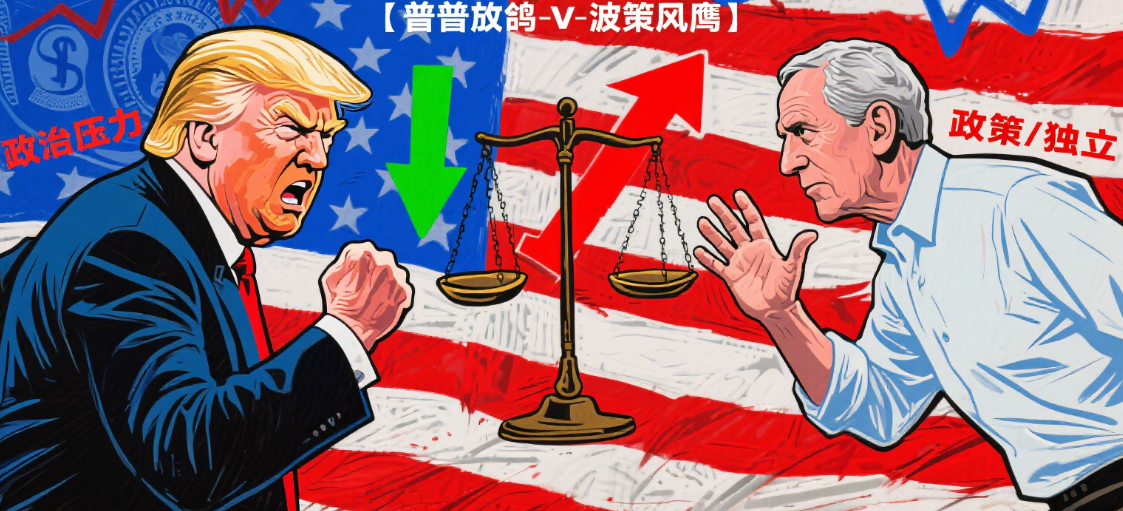1. Core Attitudes and Actions of Both Parties
Trump ('Dove'): He has repeatedly pressured the Federal Reserve to cut rates through social media and public speeches, claiming there are 'no signs of inflation' and that 'substantial rate cuts' are needed to relieve mortgage pressures on the public and offset tariff policy impacts, while also accusing Fed Chair Powell of maintaining high rates as 'harmful to the housing industry' and 'a disaster.' His pressure tactics include threatening to dismiss Powell, considering lawsuits related to the cost of renovating the Fed headquarters, mentioning the early appointment of a new Fed chair, and stating that nominating Powell as Fed chair in 2017 was 'a mistake.'
Powell ('Hawk'): He insists on the independence of the Federal Reserve, stating that Trump's calls have 'no influence' on monetary policy decisions, which are based solely on economic data, outlook, and risk balance. The Federal Reserve has maintained the federal funds rate target range (4.25%-4.50%) unchanged for five consecutive meetings, with Powell emphasizing that 'there is no rush to cut rates' and 'the policy stance is good,' refusing to signal early rate cuts. He also mentioned that tariff policies could drive up inflation and slow economic growth, expressing concerns about the potential for a stagflation scenario that conflicts with the goals of 'full employment' and 'price stability.'
2. Key Background and Market Dynamics
Policy Meeting Disagreement: At the July Federal Reserve meeting, 9 out of 12 voting members supported maintaining interest rates, while Vice Chair Bowman and Governor Waller (both appointed by Trump) voted in favor of a 25 basis point cut, marking the first time in over thirty years that two senior officials simultaneously opposed maintaining interest rates.
Market Expectation Volatility: The 'Fed Watch' shows that since August 14, the market's probability of a rate cut in September has dropped from 100% to 86%; data from the Chicago Mercantile Exchange indicates that the market expects significant rate cuts starting in June, with at least a 100 basis point reduction by year-end, but Powell only maintains expectations for two rate cuts in 2025.
Important Meeting Focus: The Jackson Hole Global Central Banking Conference will be held from August 21-23, with Powell's speech anticipated to explore policy paths. Morgan Stanley predicts he may release hawkish signals to curb overly optimistic market expectations.
3. Economic Environment and Institutional Views
Economic Status: US economic activity slowed in the first half of the year, with low unemployment and a stable job market, but inflation remains high. Tariff policies have pushed short-term inflation expectations to their highest levels since the early 1980s, and economic growth relies on a decrease in imports, with insufficient endogenous momentum.
Institutional Analysis: Caixin Securities believes the US economy will continue to slow in the long term, with potential rate cuts by the Federal Reserve within the year; Shenwan Hongyuan points out that a rate cut in September depends on the unemployment rate and CPI data before the meeting, with the second half of the year potentially showing moderate 'stagflation'; Dongfang Jincheng predicts that the Federal Reserve may have 1-2 rate cuts this year, possibly in September or November, needing to first overcome tariff inflation thresholds.


